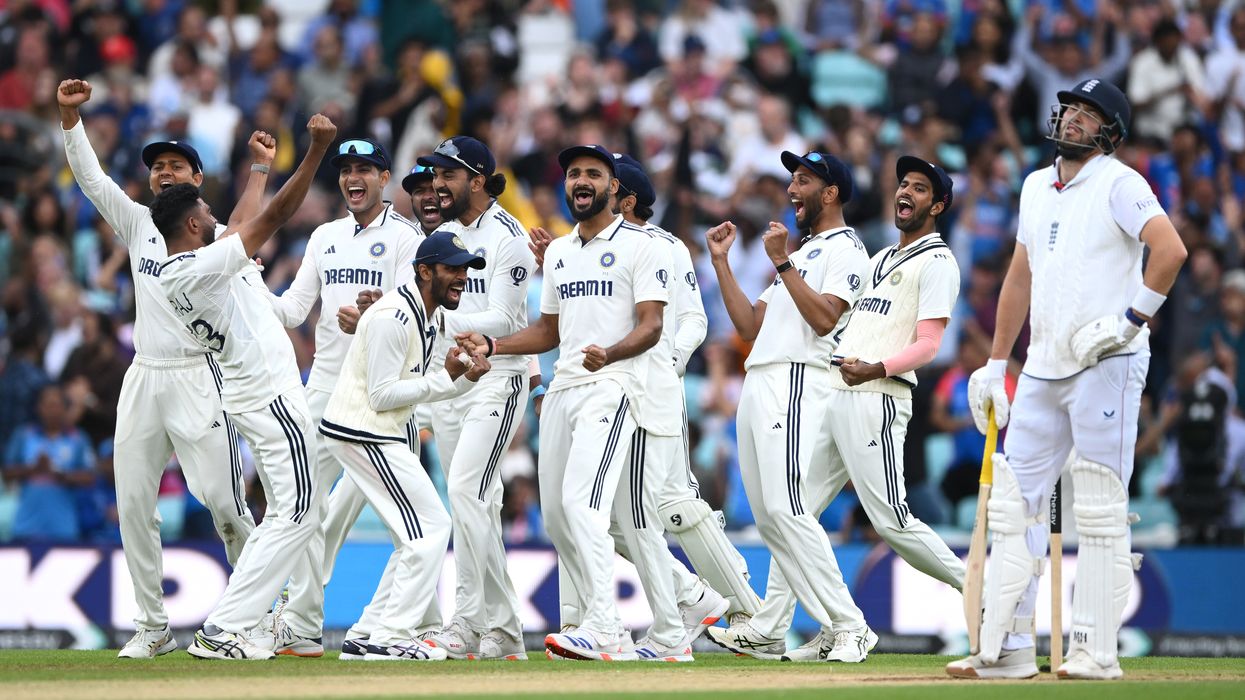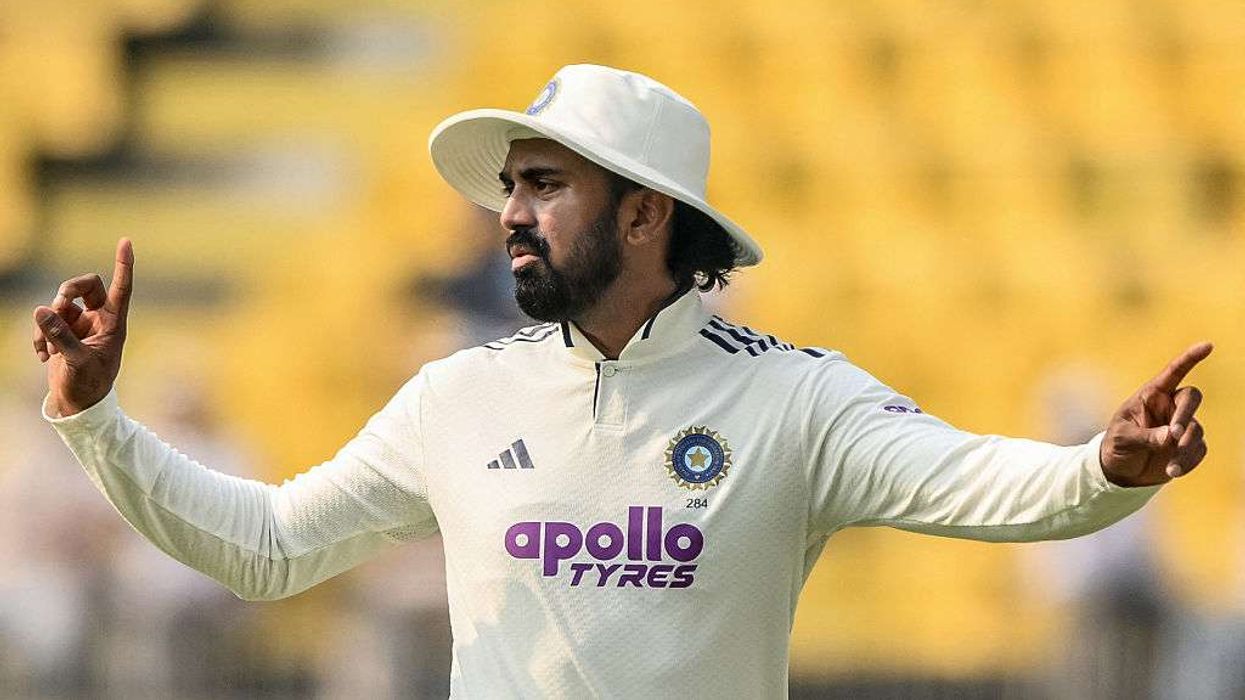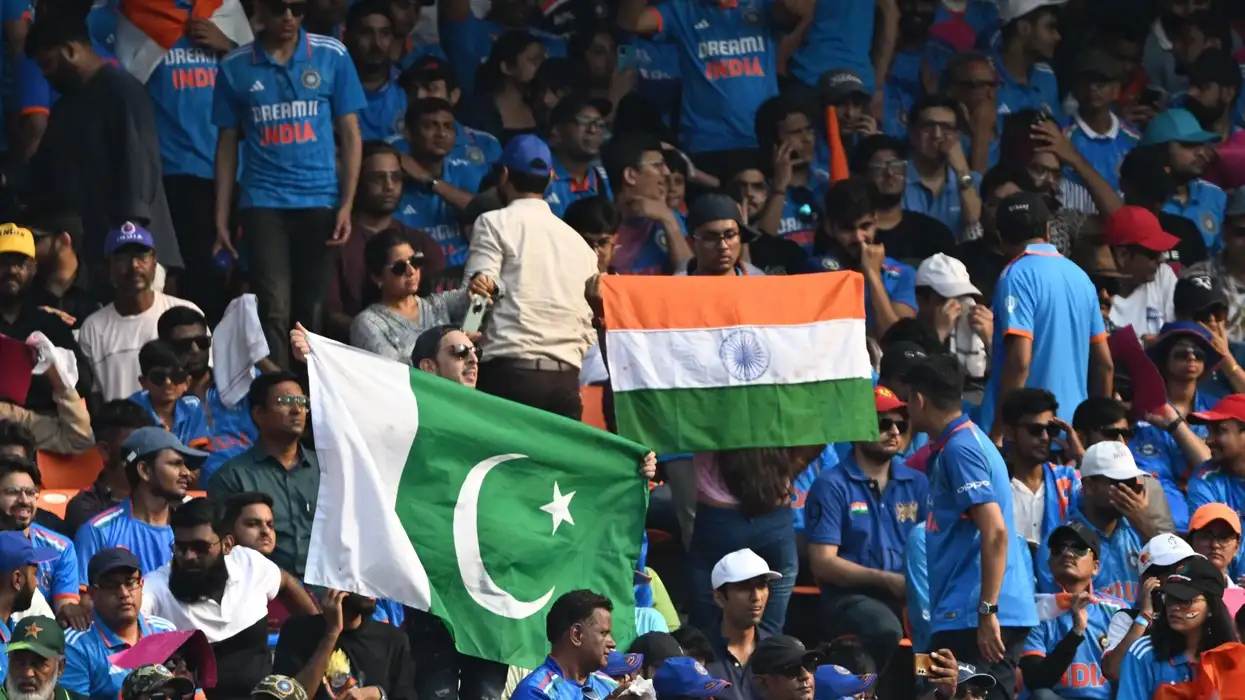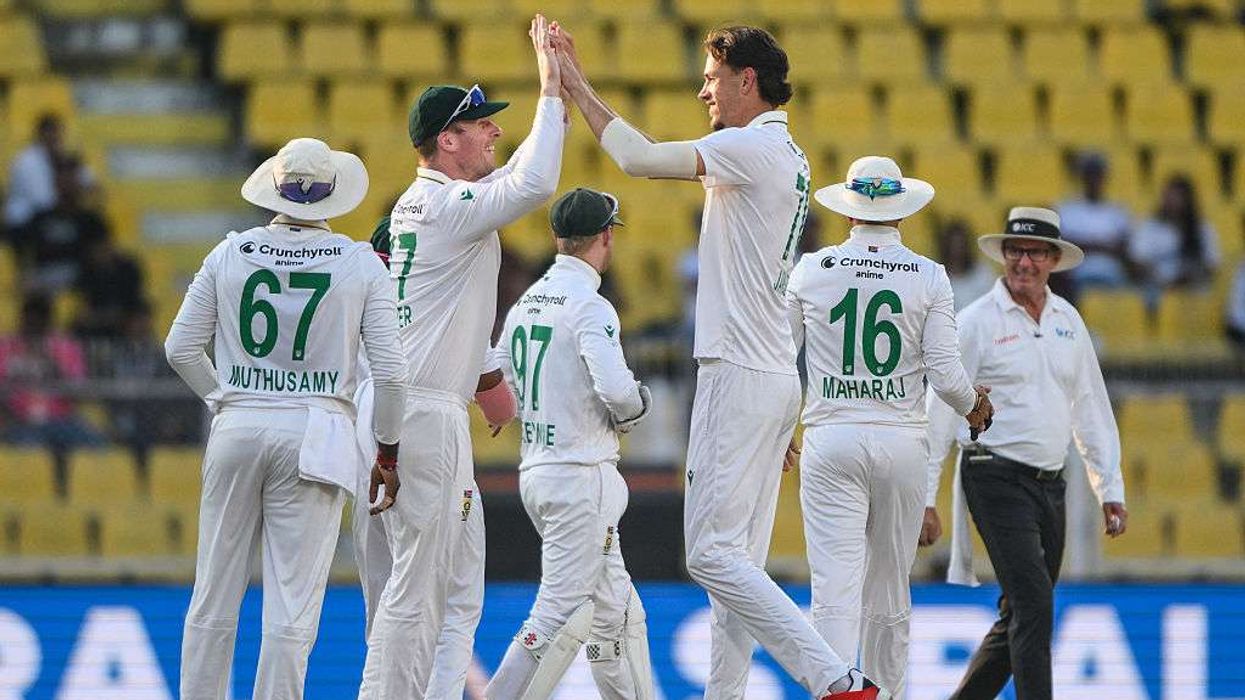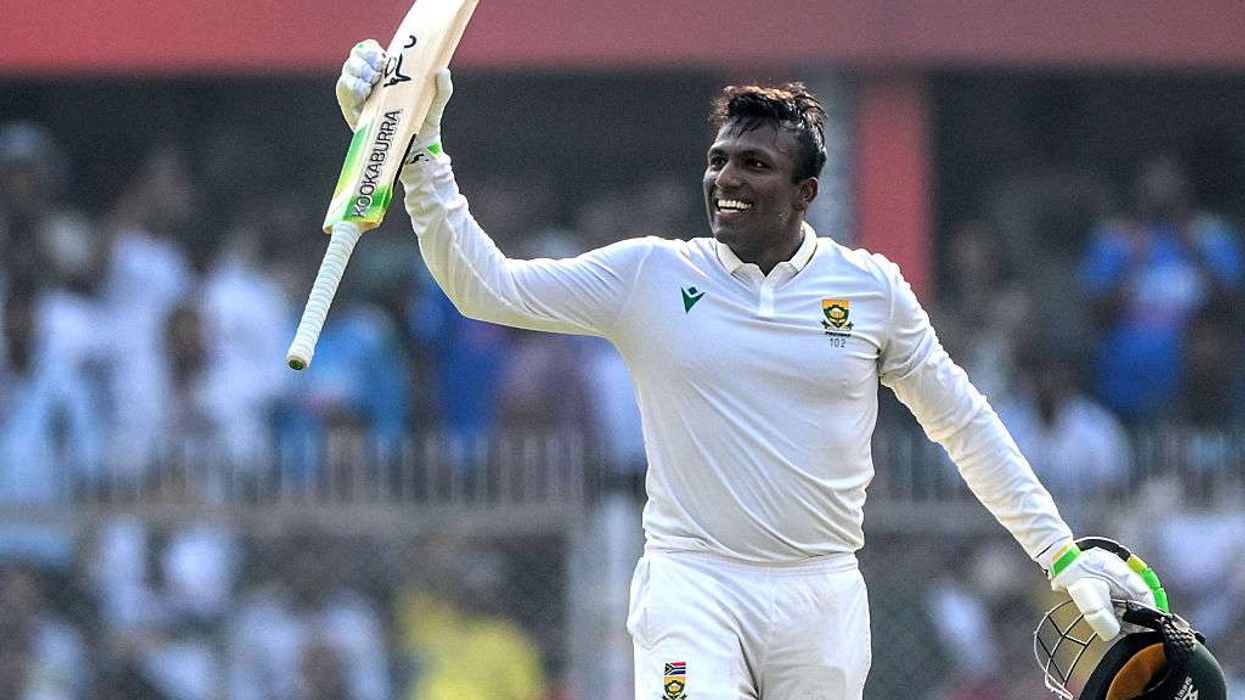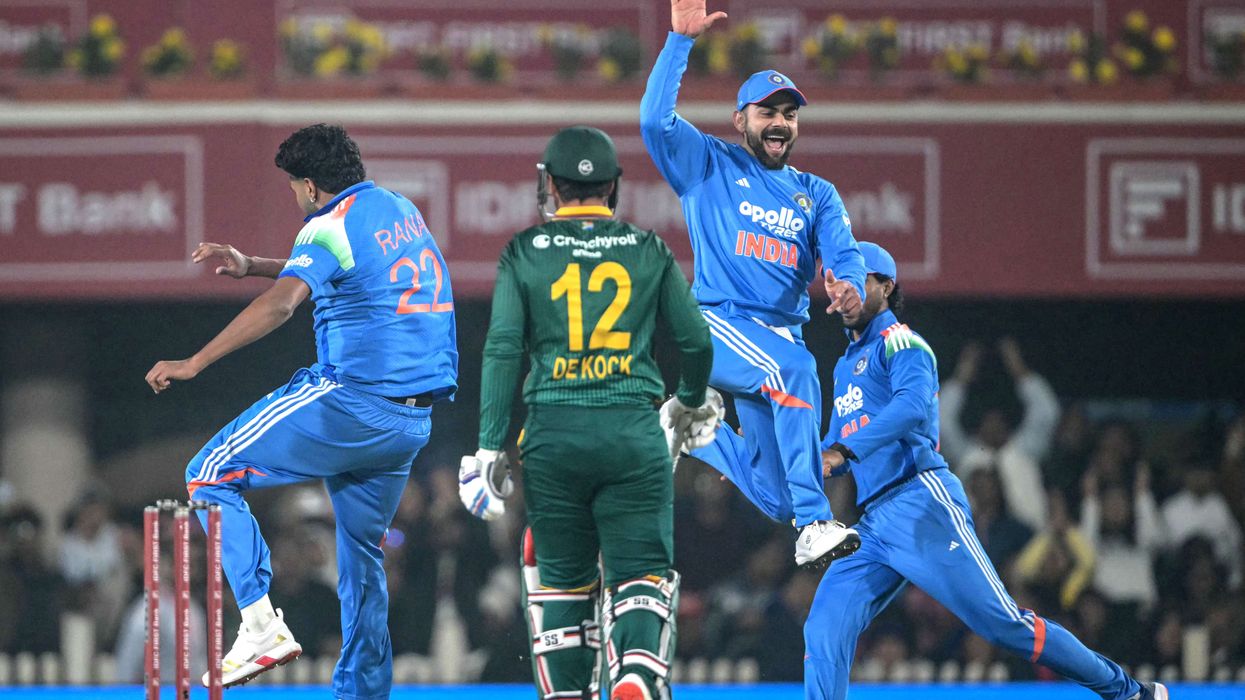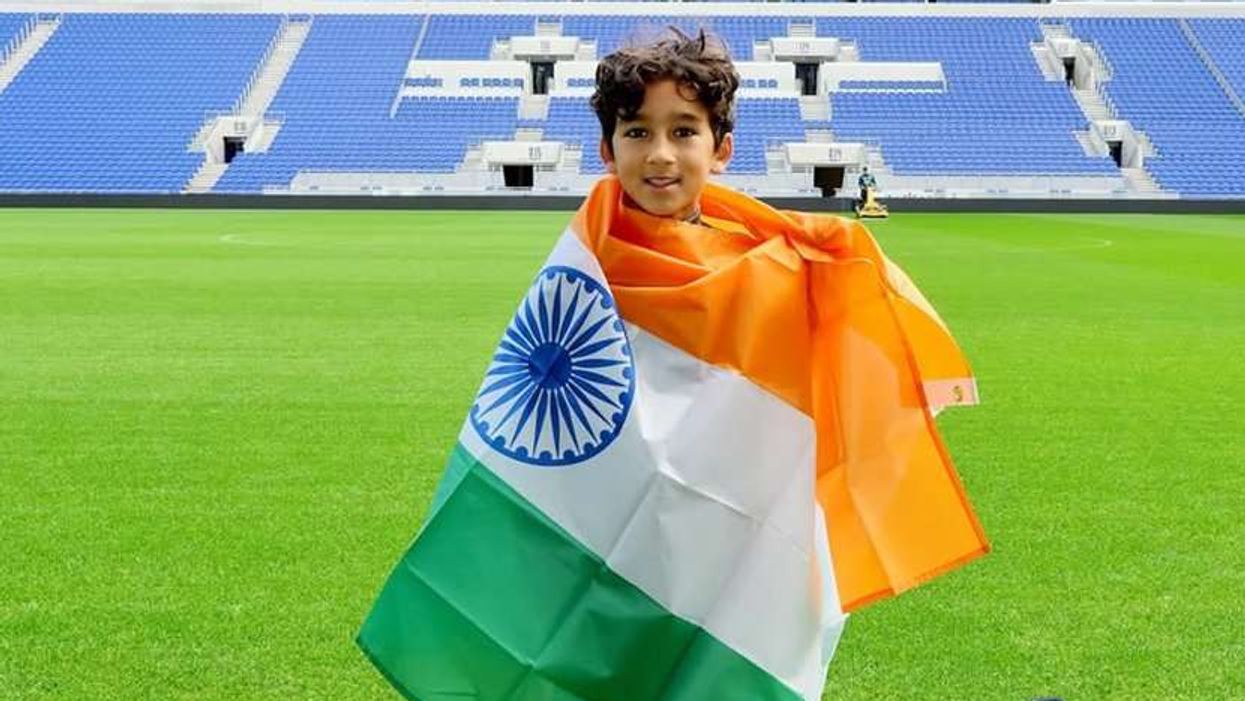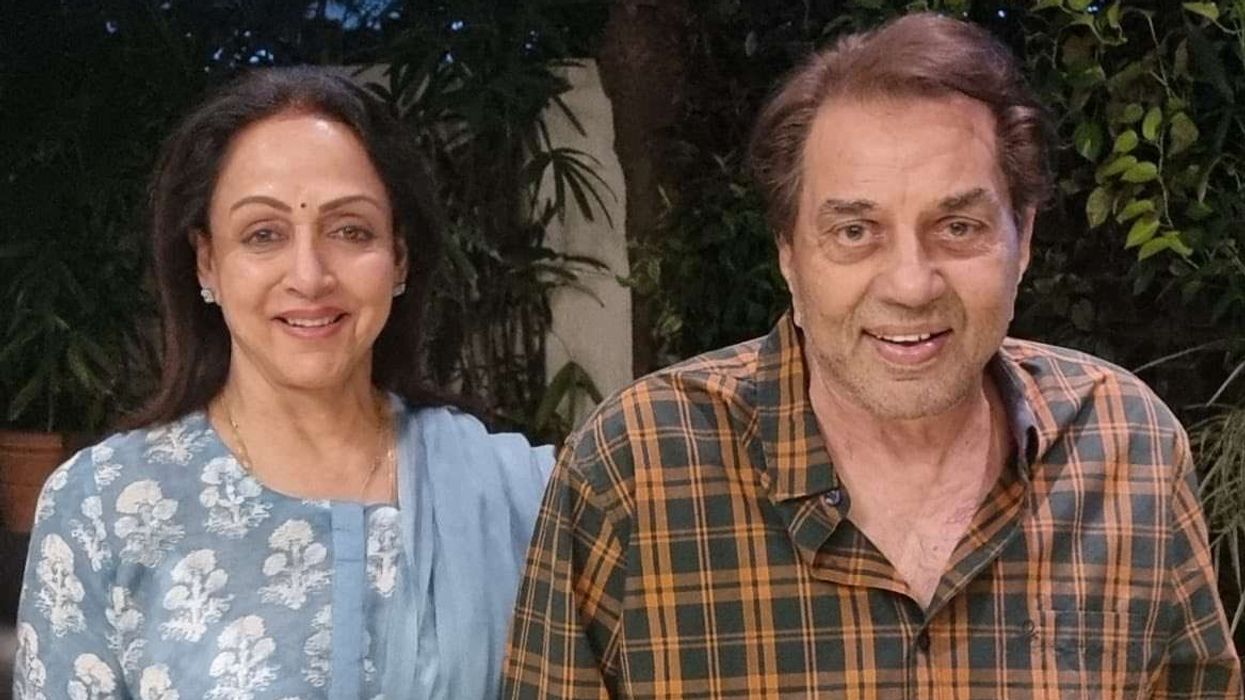THE Indian cricket team beat England in the fifth and final Test match on Monday (4) from a seemingly hopeless situation by six runs in what has been hailed as “the Oval miracle”.
The victory, which levelled the series 2–2, was celebrated by much of India’s 1.4 billion population, 2.5 million people of Indian origin in the UK, and 30 million across the diaspora as a defining moment in the nation’s history.
Former India player Navjot Singh Sidhu declared: “1.4 billion Indians proud of the Indian cricket team.”
Bollywood star Riteish Deshmukh spoke for the nation: “These are moments that will be etched in our memories for a life time. Hindustan Zindabad!!”
Coming on top of the UK-India Free Trade Agreement, the victory is being interpreted as further evidence of India rising.
India’s commerce and industry minister, Piyush Goyal, who accompanied the Indian prime minister Narendra Modi to Chequers for the FTA summit with Sir Keir Starmer, praised the “absolutely fantastic performance by our boys”.
Despite US president Donald Trump’s tariffs on India, the war in Gaza, and pressing domestic issues, Indian newspapers cleared their front pages for the Oval heroics. TV anchors declared cricket was “not just a matter of life and death but a lot more important than that”.
The hero was undoubtedly the fast bowler, Mohammed Siraj, who took 4/86 in England’s first innings and 5/104 in the second and was named player of the match. In a reverse of what happened in the Bollywood blockbuster Lagaan, he redeemed himself after stepping over the boundary line conceding six runs to Harry Brook when he was 19. The England batsman went on to score what appeared to be a match winning 111.
In the Times, the paper’s chief cricket correspondent, Michael Atherton, himself a former England cricket captain, eulogised him as “Mohammed Siraj, or ‘Siraj the Magnificent’ as he shall be known hereafter”. In India, TV presenter Rajdeep Sardesai, whose late father Dilip Sardesai was a Test cricketer, cleared the schedules to interview Siraj’s brother in Hyderabad (biryani will be served when he returns from England). “What a day. What a match!! Take a bow each and every one of you Indian cricketers! You have made is all very proud!” he said.
Author and Congress party MP Shashi Tharoor admitted on X: “Words fail me.... WHAT A WIN! Absolutely exhilarated & ecstatic for Team India on their seriesclinching victory against England! The grit, determination, and passion on display were simply incredible. This team is special. Shabash to our heroes.”
Meanwhile, in Britain it was suggested that Shubman Gill’s “never say die” young side were buoyed by the support of Indians in the crowd, not just at the Oval, but in all the five Test matches.
An English cricket writer noted that “the India team will have felt at home with the noise from the crowd”.
In the Daily Mail, former England player David Lloyd pointed out: “Even the supporters have been great. We’ve seen it before but cricket really is the be all and end all for them.” The Bharat Army, equipped with their dhols, was certainly out in force, undeterred by the high ticket prices.
One report has claimed that up to 20 per cent of British Asians support England when it plays India at cricket but this figure rises to 77 per cent when it comes to football.
But in the just concluded five match series, the evidence would indicate most British Indians were happy to fail the “Tebbit test” of loyalty to England. The former British prime minister, Rishi Sunak, called the Oval outcome “Unbelievable”, adding, “Gutted for England but what a series. Brook and Root’s stand, India’s comeback, (Chris) Woakes batting in a sling – iconic. Test cricket over five days…..there’s nothing like it.”
Atherton commented: “India deserved their draw; anything else would have been a travesty. They won more sessions over the five matches, a discrepancy skewed by the margin of victory at Edgbaston. They had the leading run-scorer, Gill, and the leading wicket-taker, Siraj. There were four Indian batsmen in the top six run-scorers — KL Rahul, Ravindra Jadeja, Rishabh Pant and Gill — and four wicket-takers — Jasprit Bumrah, (Akash) Deep, (Prasidh) Krishna and Siraj — in the top six wicket-takers. They did not know when they were beaten; digging in at Old Trafford, and surging back at the Oval when all looked lost.”
Also in the Times, Simon Wilde wrote: “England could have won 3-1. India had good opportunities to win four Tests. But 2-2 was a fair result. Losing all five tosses, India fought many uphill battles.” The former England cricket captain, Mike Brearley, who is now a psychoanalyst, psychotherapist and motivational speaker, told Eastern Eye: “The series was great for Test cricket, absolutely absorbing, and the ‘right’ overall result happened. I suppose there is continuity under Shubman Gill of what (Sourav) Ganguly and (Virat) Kohli also achieved, (Mahendra Singh) Dhoni too, to make India really competitive. As Gill said, ‘We never give up’, and with his leadership they did indeed fight all the way. There was also an impression that Indian players are willing to be tough in confrontation as well as skilled and graceful – but India had already come a fair way along this path! It is good for the country that the players come from a wide range of secular India.”
Former England skipper Michael Vaughan wrote in the Daily Telegraph: “I turned up thinking England would win, but led by Mohammed Siraj, they were magnificent. With their player pool, you would expect them to be a skilful side, but they have so much heart and such a great attitude that means they are never beaten.”
And the Daily Telegraph’s chief cricket writer Scyld Berry began his piece with: “In my privileged existence of watching more than 500 Tests I have seen only a couple of finishes that have been as climactic as this Oval Test.”
Tim Wigmore, the paper’s deputy cricket correspondent, reminded readers of “the abiding theme of Siraj’s journey. The son of an auto-rickshaw driver, Siraj learnt the game playing in tennis-ball leagues in Hyderabad; the upbringing shaped his skinny style and full length. Siraj did not bowl with a hard ball until he was 20. A year later, he was representing his state. After this pulsating hour at the Oval, Siraj is now the author of a moment that will continue to be replayed throughout India’s Test history.”
In the Guardian, Barney Ronay wrote from the Oval: “Even the ceremonials at the end were part of the theatre, like the final act of a Shakespeare comedy when all returns to laughter, bonds are formed, hands shaken, misunderstandings corrected.” Looking beyond the cricket, the Oval result was analysed for Eastern Eye by the psychiatrist Raj Persaud: “The seesaw, roller coaster ride that was the Oval Test match, combines the emotional power of the close shave, with the fact cricket matters enormously to Indians in India, and indeed all over the world, not least because India is groping towards being a superpower but still, relatively, lacks success on the world stage in sport, art, culture, movies and science. This will all change with time, but until then, beating the rest of the world at cricket will embody enormous emotional significance and national pride for Indians.”
He emphasised: “It’s more than a sport, it’s a religion. But how much of this is really about an unconscious need still for revenge on the old colonial masters? Let’s not forget that the series was only drawn, and in my humble opinion, India, given all the money in the domestic game, should win, and should expect to win against anybody.
“We are on our way, but there remains a real danger, that too much money can also destroy the ability of the national team to win, because players are too distracted by local teams and local money. For all our national pride in the Indian cricket team, they are also fallible men. But the actual greatest moment of all, which embodies the true spirit of cricket, is the Indian team’s sporting acknowledgement, at their moment of triumph, of the huge courage of the final English player to take to the pitch, with a dislocated shoulder, hand in a sling, and in some pain, to fight to the bitter end. This was heroism of the highest order.
“I was reminded of CLR James’s immortal quote in Beyond a Boundary: ‘What do they know of cricket who only cricket know?’ This was inspired by Kipling’s poem, The English Flag, where he asks, ‘And what should they know of England who only England know?’ to celebrate the British Empire’s global reach. And India needs to look outside of itself to emulate that same reach today.”
Iain Wilton, author of C B Fry, King of Sport – the biography of the Englishman reveals new material on Fry’s friendship with the Indian cricketing legend Prince Ranjitsinhji – put the series in historical context for Eastern Eye: “It’s had everything and the image of Chris Woakes, batting with his arm in a sling, will be immortalised – rather like Colin Cowdrey (batting with a broken arm) at Lord’s in 1963. “I’m assuming that fewer (English) eyes were on Woakes and the Oval today than on Cowdrey and Lord’s in 1963!
But it’s surely been the finest set of Tests that Britain has hosted since the incredible Ashes series in 2005 when, at long last, England beat an Australian team containing so many all-time greats.
“It’s still great to have such an exciting series which has reminded everyone here that the Ashes aren’t the ‘be all and end all’ – so thank goodness for that!”
The power balance in world cricket has shifted from England to India, according to Andy Carter, author of Beyond the pale: Early Black and Asian Cricketers in Britain 1868-1945. His book provides the most comprehensive account of Indian cricket tours of the UK, starting with a Parsee team in 1888. He writes, too, of teams that came in 1911, 1932 and 1936, when it was even felt that the visitors from India, then a British colony, should be led by an English captain. In 1928, the Indian population of the UK was put at 7,128.
In an interview with Eastern Eye after the Oval Test, Carter spoke of the changes in British society: “Cricket is disappearing from state schools and played mainly in private schools. There are also British Asians playing for England. Cricket raises complicated questions of identity. Till the 1970s the MCC controlled cricket from Lord’s. There was an ICC but it deferred to the MCC. But after the IPL, the money is in India.
The power balance has shifted to India.” London based playwright Shomit Dutta, who received an Eastern Eye Arts, Culture & Theatre Award (ACTA) last year for his cricketing play, Stumped – he is a talented club cricketer himself – said: “Since the days of my first cricketing heroes—Kapil Dev, Ian Botham, Barry Richards—I have been more absorbed by individuals than teams. But with the passing of Norman Tebbit, I have found myself re-assessing my team affiliations. I have always supported England in the Ashes as fervently as any (other) Englishman.
“With the recent Oval Test, as with the whole England-India series, we witnessed two casts of incredibly gifted and varied cricketing characters in an extraordinarily tense and even contest. In a postTebbit-test environment, I have felt freer to support India just as those of Welsh, Scottish or Irish heritage have always been free to—indeed, expected to— support their ‘ancestral’ team. And yet the dramatist in me perhaps yearned for the very ending we got: an India win by the narrowest of margins to square a fiercely contested series. It was hard not to feel it was all scripted by the cricketing gods from on high, and it confirms my conviction that only in Test cricket, the supreme five-act form of the game, is such drama possible.”
